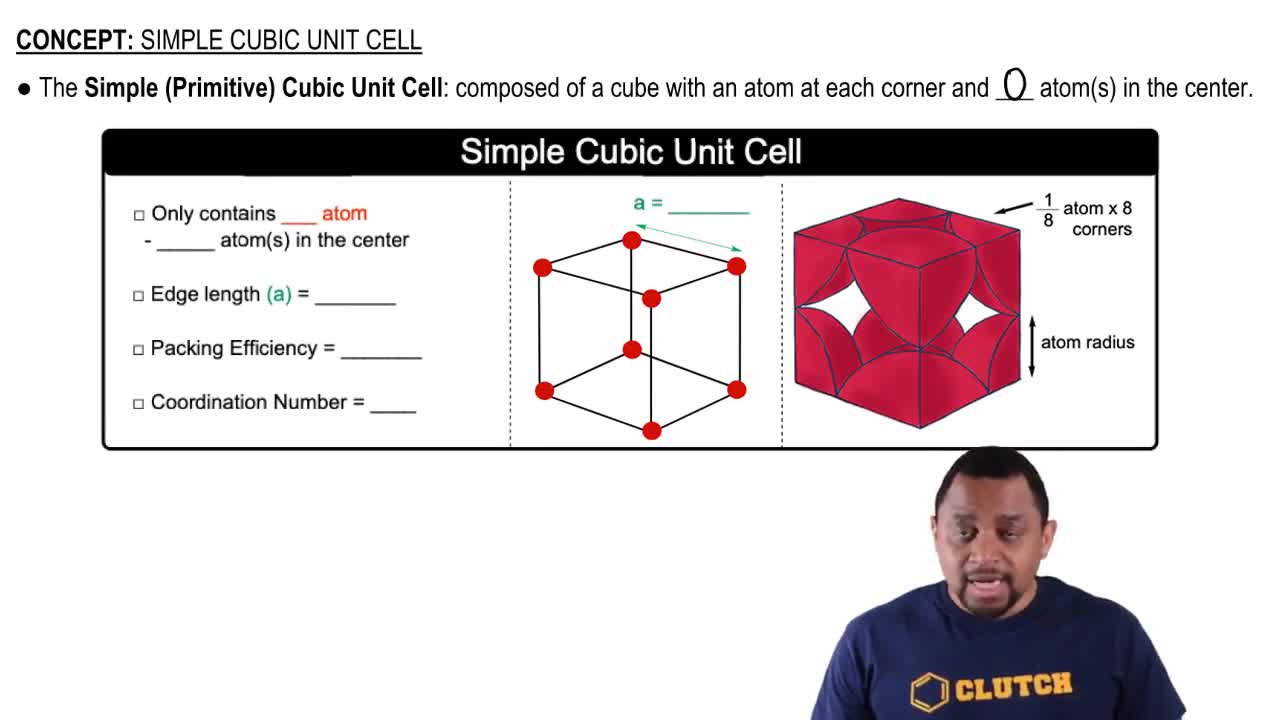Here are the essential concepts you must grasp in order to answer the question correctly.
Face-Centered Cubic (FCC) Structure
The face-centered cubic (FCC) structure is a type of crystal lattice where atoms are located at each of the corners and the centers of all the faces of the cube. In an FCC unit cell, there are a total of four atoms per unit cell, contributing to its high packing efficiency. Understanding this structure is essential for calculating properties like edge length and density.
Recommended video:
Face Centered Cubic Example
Unit Cell Edge Length
The edge length of a unit cell in a crystal lattice is the length of one side of the cube that defines the repeating unit of the crystal structure. For FCC lattices, the relationship between the atomic radius and the edge length can be expressed as a = 2√2r, where 'a' is the edge length and 'r' is the atomic radius. This relationship is crucial for determining the dimensions of the unit cell.
Recommended video:
Density Calculation
Density is defined as mass per unit volume and is calculated using the formula density = mass/volume. For a crystalline solid, the mass can be determined from the number of atoms in the unit cell and the atomic mass, while the volume is derived from the cube of the edge length. This concept is vital for finding the density of platinum once the edge length is known.
Recommended video:
 Verified step by step guidance
Verified step by step guidance


